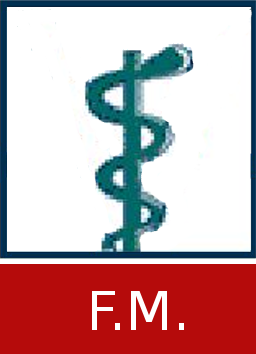Étude de la dépense énergétique chez les patients ayant survécu à un séjour prolongé aux soins intensifs
Cassart, Mathilde 
Promoteur(s) : Rousseau, Anne-Françoise
Date de soutenance : 1-sep-2021/3-sep-2021 • URL permanente : http://hdl.handle.net/2268.2/12734
Détails
| Titre : | Étude de la dépense énergétique chez les patients ayant survécu à un séjour prolongé aux soins intensifs |
| Auteur : | Cassart, Mathilde 
|
| Date de soutenance : | 1-sep-2021/3-sep-2021 |
| Promoteur(s) : | Rousseau, Anne-Françoise |
| Membre(s) du jury : | Misset, Benoît 
VERBRUGGE, Anne-Marie 
PAQUOT, Nicolas 
|
| Langue : | Français |
| Nombre de pages : | 65 |
| Mots-clés : | [fr] post soins intensif, calorimétrie indirecte, PICS, nutrition |
| Discipline(s) : | Sciences de la santé humaine > Anesthésie & soins intensifs |
| Institution(s) : | Université de Liège, Liège, Belgique |
| Diplôme : | Master en sciences de la santé publique, à finalité spécialisée en gestion des institutions de soins |
| Faculté : | Mémoires de la Faculté de Médecine |
Résumé
[fr] INTRODUCTION : Aujourd’hui, nombreux sont les patients qui survivent à un long séjour en unité de soins intensifs, mais ce séjour n’est pas sans conséquence. Dans un premier temps, nous avons voulu mesurer la dépense énergétique au repos des patients post SI, afin de connaître le besoin calorique de ces patients. Ensuite, nous avons comparé la DER mesurée à des équations prédictives utilisées en USI. In fine, nous avons évalué si les apports alimentaires post SI couvraient la dépense énergétique du patient.
METHODOLOGIE : Il s’agit d’une étude de cohorte prospective observationnelle monocentrique sur les patients ayant séjourné minimum sept jours en USI. Une mesure de la DER par calorimétrie indirecte a été réalisée une semaine après la sortie d’USI. La DER mesurée a été comparée aux DER estimées par les recommandations de l’ESPEN (20, 25, 30 kcal/kg/jour) et par les formules d’USI (Harris-Benedict, Mifflin, Penn State et Ireton-Jones). Ensuite, une anamnèse alimentaire des trois jours précédents le test a été réalisée, afin de comparer le bilan calorique du patient post-USI à la dépense énergétique au repos.
RESULTATS : Vingt-neuf patients ont été étudiés pendant la période d’hospitalisation post USI. L’âge moyen était de 58 ans et l’IMC était de 27,4kg/m², dans une population essentiellement masculine. La DER médiane mesurée était de 1811 (1450-1975) kcal/jour. L’équation de Ireton-Jones semble être l’équation la plus précise pour estimer la DER d’un patient post USI (moyenne +- écart-type : 1831 +- 337 kcal/jour – Biais : 53.53 +- 204.37 kcal/jour). Les besoins caloriques prescrits, tout mode nutritionnel confondu, étaient de 2400 (2160-2450) kcal/jour. Les apports alimentaires consommés par le patient étaient 1800 (1500-2250) kcal/jour. (déficit = 825kcal avec une p valeur < 0.05) . Ces ingesta couvrent la dépense énergétique au repos du patient.
CONCLUSION : Dans les sept jours après sa sortie d’USI, le patient post USI a une dépense de 24 à 25 kcal/kg/jour au repos. La prise alimentaire une semaine après la sortie des soins intensifs est limitée par divers facteurs qui empêchent un apport hypercalorique pour couvrir la dépense énergétique totale. Parmi les formules testées avec un poids de calcul, l’équation la plus précise est celle de Ireton Jones et la formule de 25 kcal / kg / jour recommandée par l’ESPEN.
[en] INTRODUCTION : Today, many patients survive a long ICU stay, but this stay is not without consequences. More and more survivors report suffering from post ICU disorders. First, we wanted to measure the resting energy expenditure (REE) of post ICU patients in order to know the caloric requirement these patients. Then, we compared this DER value measured by indirect calorimetry to predictive equations of energy expenditure used in ICU. Finally, we assessed if the post ICU food intake covered the patient's energy expenditure or not.
METHODOLOGY : This was a prospective observational monocentric cohort study of patients with a minimum seven-day stay in ICU. A DER measurement by indirect calorimetry was performed in a sample of 29 critically ill patients one week after ICU discharge at the University Hospital of Liege. The measured DER was compared to the DER estimated by the ESPEN recommendations (20, 25, 30 kcal/kg/day) and the ICU's equations (Harris-Benedict, Mifflin, Penn State and Ireton-Jones). Next, a dietary history for the 3 days prior to the test was taken to compare the patient's post-IUS caloric balance to resting energy expenditure.
RESULTS : Twenty-nine patients were studied during the post-ICU hospitalisation period. The average age was 58 years old and the BMI was 27.4 kg/m², in a predominantly male population. The median DER measured was 1811 (1450-1975) kcal/day. The Ireton-Jones equation appears to be the most accurate equation for estimating the DER of a post ICU patient one week after discharge from a long stay (Mean +- standard deviation: 1831 +- 337 kcal/day - Bias: 53.53 +- 204.37 kcal/day). The prescribed caloric requirement for all nutritional modes was 2400 (2160-2450 kcal/day). The food intake of the patient was 1800 (1500-2250) kcal/day.( a deficit of 825 kcal which is significant ( p value < 0.05)). These ingesta covered the resting energy expenditure.
CONCLUSION : In the seven days after discharge from ICU, the post ICU patient has an expenditure of 24 to 25 kcal/kg/day at rest. Food intake one week after ICU discharge is limited by various factors that prevent hypercaloric intake. Among the equation tested with a calculated body weight, the most accurate equation is Ireton Jones and the 25 kcal / kg / day recommended by ESPEN.
Fichier(s)
Document(s)

 S184468_CASSART_Mathilde_Mémoire2021.pdf
S184468_CASSART_Mathilde_Mémoire2021.pdf
Description: -
Taille: 1.38 MB
Format: Adobe PDF

 Erratum_S184468_CASSART_Mathilde_Mémoire2021.pdf
Erratum_S184468_CASSART_Mathilde_Mémoire2021.pdf
Description: -
Taille: 350.13 kB
Format: Adobe PDF
Citer ce mémoire
L'Université de Liège ne garantit pas la qualité scientifique de ces travaux d'étudiants ni l'exactitude de l'ensemble des informations qu'ils contiennent.


 Master Thesis Online
Master Thesis Online




